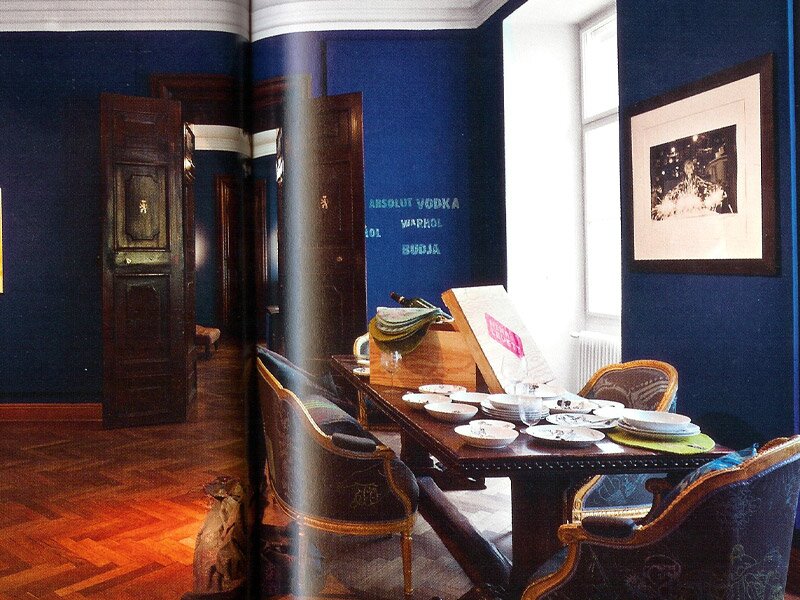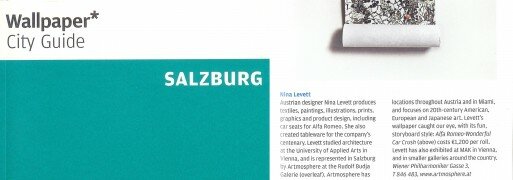Nina Levett designed a small series of plates for her best friend’s wedding.



Nina Levett designed a small series of plates for her best friend’s wedding.



As a design studio with interests in the elevation of the everyday domestic sphere to that of art object, we see our artistic roots in the rich decorative art tradition of Vienna.
The city is full of elements that resonate with, and inspire, our desire to integrate decoration and functionality. The signs of the Wiener Werkstaette and the Seccession are evident throughout the city. Less evident is the breach that occurred during the 1930s and 1940s. But, the work of many of the contemporary Viennese artists today can be seen within this on-going story of reaction, creativity, suppression and re-emergence.
Nina Levett’s work on textiles, wallpapers and interior furnishing follows from the work of artists and designers such as Hoffmann, Klimt and Moser, but also reflects the earlier interests of architects such as von Falke who clearly saw the home as a force for social control and cultural expression. The concepts which flow within all of the experimentation in decorative arts in Vienna during the last century have profoundly influenced her responses to the objects around her and provide the intellectual, if not the literal, inspiration for much of what she does.
A key element of Hoffmann’s Gesamtkunstwerk was the elevation of all of the elements of the interior to the status of art object, whilst at the same time, producing recognizably functional household objects. This has been a key concept in Nina Levett’s work, most notably with her cutlery and crockery sets that are currently on display at the MAK, Vienna. Designed to be completely functional items, they are, at the same time, high-end art objects that seek to objectify and explore the darker elements of the domestic sphere they are designed for.
Our aim is to allow art to enter the lives of people through small objects of daily use.
My work was feetured in Wallpaper City Guide 2012.
This is the text that was written about my work (quote from Wallpaper City guide Salzburg 212):
“Austrian designer Nina Levett produces textiles, paintings, illustrations, prints graphics and product design, including car seats for Alfa Romeo. She also created tableware for the company’s centenary. Levett studied architecture at the University of Applied Arts in Vienna, and is represented in Salzburg by Artmosphere at the Rudolf Budja Gallery (overleaf). Artmosphere has loacations throughout Austria and Miami, and focusses on 20th century American, European and Japanese art. Levett’s wallpaper caught our eye, with it’s fun storyboard style.: Alfa Romeo Wonderful Car Crush (above costs 1200 USD per roll). Levett also exhibited at the MAK in Vienna and in smaller galleries around the country,…”




Nina Levett went to the Belvedere Museum to see an exhibition called “Gustav Klimt / Josef Hoffmann. Pioniere der Moderne.”
She was inspired to see this exhibition because of her contacts to the Austrian Museum of Applied Arts in Vienna. When she last talked to the curator he mentioned that in 2012 the city of Vienna would be promoting the work and life of Gustav Klimt.
The MAK is currently inviting many interesting people to discuss its identity and future. Nina Levett went to this discussion about twice a week. She heard a talk by the content manager of the Vienna Tourism agency who explained what the average Vienna visitor wants to see in Vienna. The main reason to come to Vienna is its art and culture.
Nina Levett feels that her work is deeply embedded in the culture of Vienna. So she thought it was worthwhile to know what people see when they come to Vienna, what other artists have managed to do that has become to be so valuable to her city.
As to the value, the content manager of the Vienna Tourism agency mentioned that 4 million nights were booked last year by tourists in Vienna. She also said that the average amount of money spent per night amounts to 264 EUR. All this value is largely brought to my city by artists living in my city a century ago.
When Levett heard this she felt that her work could one day be of great value for society. So she went to discover what made Klimt and Hoffmann’s work so special that people all over the world come to Vienna to see it.
Nina Levett booked the tour of the exhibition and together with about 15 other people and listened to the explanations about the works shown. She realised that Klimt and Hoffmann like artists today had to struggle to survive. But it was not only a struggle to feed themselves but also a struggle to “feed their art”. Had they not had the support of the cultural leaders of their time they would not have been commissioned with the works that have made them so famous and that have caused such great pleasure for people all over the world.
Klimt created some of his most famous artworks for exhibitions like the 1902 exhibition about Beethoven.
For further reading click here for a group interview with Nina Levett in the daily newspaper “Die Presse” about Gustav Klimt by Daniel Kalt.
In this video Nina Levett uses a handheld mobile device (an which creates a kaleidoscope effect to photos and videos) to create a disconcerting, distorted view of reality.
READ MORE